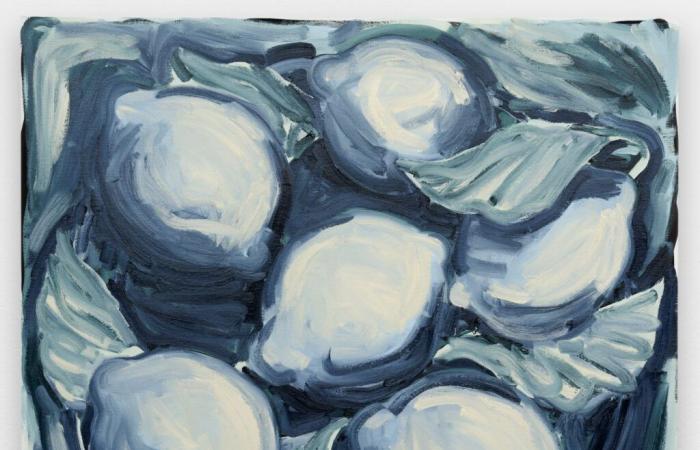In a little over a week, on Saturday November 23, the third exhibition that the Semiose gallery is devoting in its space to the Dijon painter Hugo Capron will begin.
Titled Lemonthe first consisted of a series of paintings depicting, as its name indicated, the representation of the same lemon tree. Today's one exposes the fruits as shown in the image chosen at the opening of this article: lemons executed in one go and from memory as was already the case with the tree, because the artist paints without a model, whether real or photographic.
Named Dolphin Derbythe second exhibition presented, among other things, a series of paintings of shrimp to which the black eyes of the mosquitoes painted this year seem to echo. Beyond this duo of circular shapes responding from one series to another, we find the same way of twisting the body of the animal so that it entirely occupies the space of the canvas.
The mosquitoes, but this is also true of the lemons, seem a little cramped there and this is undoubtedly the way that the painter found to make us see, beyond the subjects, lines and colors. A mosquito on a lemon would have told us a completely different story than these lemons and mosquitoes adapted to the surface, not only in terms of surface area but also in terms of flatness.
If Capron's fruits and animals are thus constrained, picked up on their sides and flattened in their thickness, it is not that the plasticity of the bodies of these models particularly interests the artist (the lemon is not, moreover, the more flexible of fruits) but although by giving them the same properties as the support, it directs our attention to the medium.
Indeed, and although he is often criticized because of the prescriptive nature of his writings, the critic Clement Greenberg had shown it correctly: what distinguishes painting from all other arts is this flat and limited surface. with which the painter must deal. By focusing our attention on the surface, Capron invites us to look at the painting which is obviously not just a support but also colors, materials, gestures.
At the heart of his approach, the serial work that he borrows from the world of printing from which he comes, allows the artist to express this richness of painting. Thus, the lemon tree standing out clearly against the background responds to the tone on tone of the still life with lemons and the pop colors of the shrimp respond to the almost dirty tones of representations of mosquitoes.
But, even more than the variation in style from one series to another, it is the multiplicity of nuances of the same subject which allows us to grasp – the Impressionists have demonstrated – the infinite possibilities of this medium. The different treatments of the mosquito by Capron are another example with, if we stick to this story of how to signify the surface, the appearance on one of the canvases of a fine border of color framing the image.
Like other Dijon painters we spoke about recently, the subject, often modest or classic, is less important than its treatment. There is not really a subject, rather motifs, declined and exhausted from one canvas to another and, if there is a theme which runs through Capron's painting through his paintings of lemons and of mosquitoes, but also of rivers or fireworks, it is perhaps just this: the plasticity of the painting.
The exhibition is on display until December 21.






